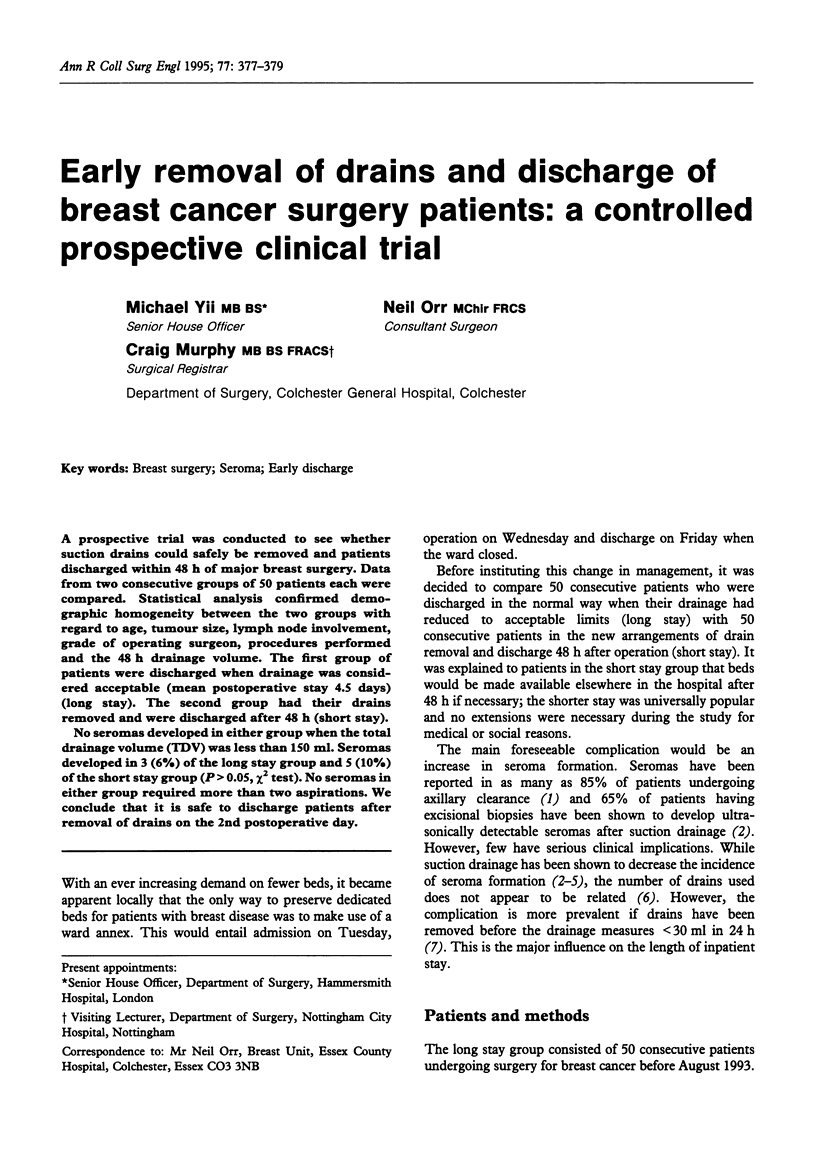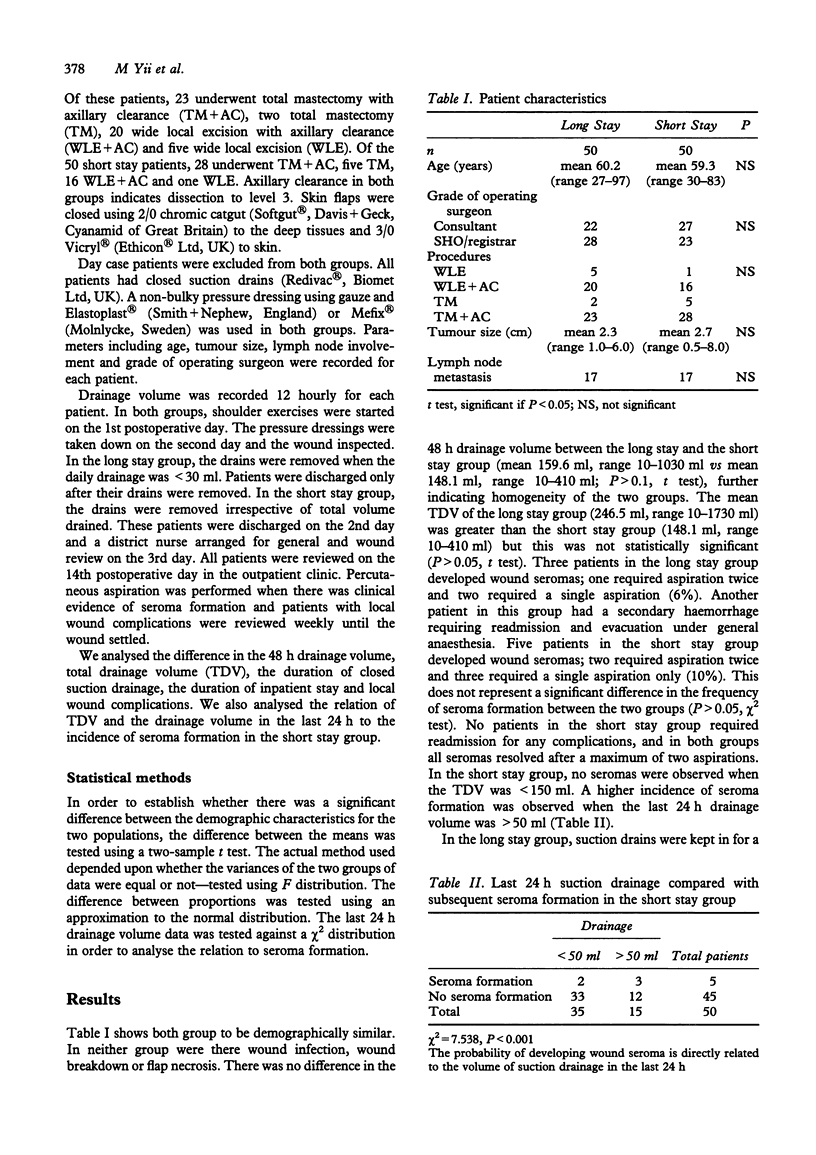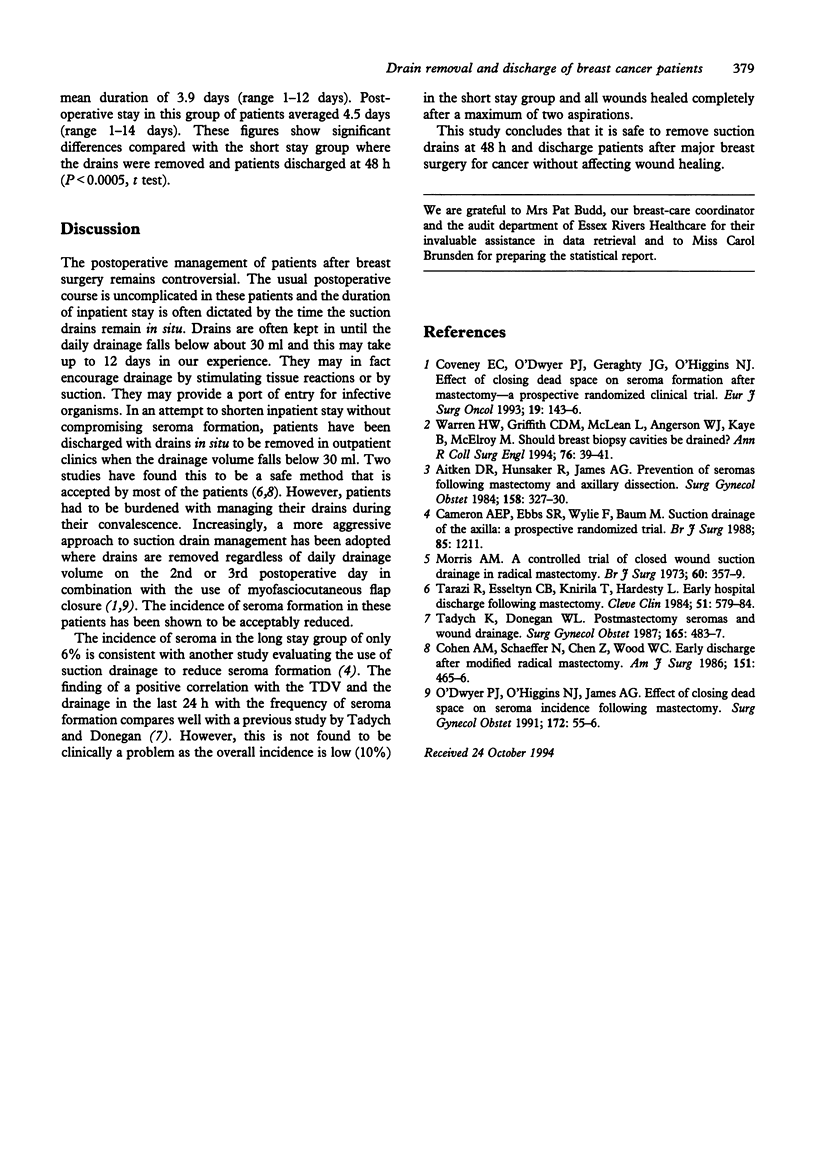Abstract
A prospective trial was conducted to see whether suction drains could safely be removed and patients discharged within 48 h of major breast surgery. Data from two consecutive groups of 50 patients each were compared. Statistical analysis confirmed demographic homogeneity between the two groups with regard to age, tumour size, lymph node involvement, grade of operating surgeon, procedures performed and the 48 h drainage volume. The first group of patients were discharged when drainage was considered acceptable (mean postoperative stay 4.5 days) (long stay). The second group had their drains removed and were discharged after 48 h (short stay). No seromas developed in either group when the total drainage volume (TDV) was less than 150 ml. Seromas developed in 3 (6%) of the long stay group and 5 (10%) of the short stay group (P > 0.05, chi 2 test). No seromas in either group required more than two aspirations. We conclude that it is safe to discharge patients after removal of drains on the 2nd postoperative day.
Full text
PDF


Selected References
These references are in PubMed. This may not be the complete list of references from this article.
- Aitken D. R., Hunsaker R., James A. G. Prevention of seromas following mastectomy and axillary dissection. Surg Gynecol Obstet. 1984 Apr;158(4):327–330. [PubMed] [Google Scholar]
- Cameron A. E., Ebbs S. R., Wylie F., Baum M. Suction drainage of the axilla: a prospective randomized trial. Br J Surg. 1988 Dec;75(12):1211–1211. doi: 10.1002/bjs.1800751222. [DOI] [PubMed] [Google Scholar]
- Cohen A. M., Schaeffer N., Chen Z. Y., Wood W. C. Early discharge after modified radical mastectomy. Am J Surg. 1986 Apr;151(4):465–466. doi: 10.1016/0002-9610(86)90104-2. [DOI] [PubMed] [Google Scholar]
- Coveney E. C., O'Dwyer P. J., Geraghty J. G., O'Higgins N. J. Effect of closing dead space on seroma formation after mastectomy--a prospective randomized clinical trial. Eur J Surg Oncol. 1993 Apr;19(2):143–146. [PubMed] [Google Scholar]
- Morris A. M. A controlled trial of closed wound suction. Br J Surg. 1973 May;60(5):357–359. doi: 10.1002/bjs.1800600509. [DOI] [PubMed] [Google Scholar]
- O'Dwyer P. J., O'Higgins N. J., James A. G. Effect of closing dead space on incidence of seroma after mastectomy. Surg Gynecol Obstet. 1991 Jan;172(1):55–56. [PubMed] [Google Scholar]
- Tadych K., Donegan W. L. Postmastectomy seromas and wound drainage. Surg Gynecol Obstet. 1987 Dec;165(6):483–487. [PubMed] [Google Scholar]
- Tarazi R., Esselstyn C. B., Jr, Kuivila T., Hardesty I. Early hospital discharge following mastectomy. Cleve Clin Q. 1984 Winter;51(4):579–584. doi: 10.3949/ccjm.51.4.579. [DOI] [PubMed] [Google Scholar]
- Warren H. W., Griffith C. D., McLean L., Angerson W. J., Kaye B., McElroy M. Should breast biopsy cavities be drained? Ann R Coll Surg Engl. 1994 Jan;76(1):39–41. [PMC free article] [PubMed] [Google Scholar]


